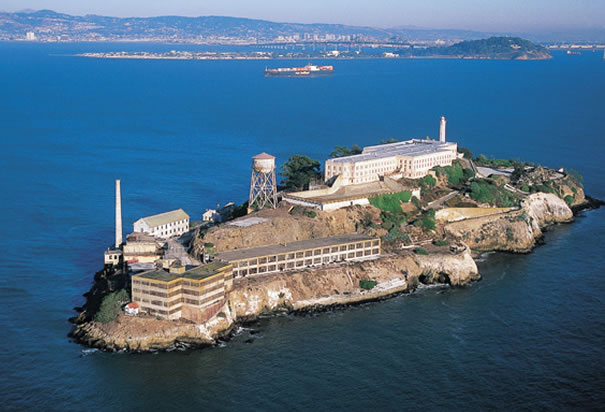03.21

On March 21, 1963, Alcatraz Prison was closed. At its peak period of use in 1950s, “The Rock” housed over 200 inmates at the maximum-security facility. Alcatraz remains an icon of American prisons for its harsh conditions and record for being inescapable. The twelve-acre rocky island, one and a half miles from San Francisco, featured the most advanced security of the time. Some of the first metal detectors were used at Alcatraz. Strict rules were enforced against the unfortunate inmates who had to do time at Alcatraz. Nearly complete silence was mandated at all times. Some its infamous inmates included Al Capone, Alvin Karpis, Arthur “Doc” Barker, Mickey Cohen, and Robert Stroud “The Birdman of Alcatraz.” The island was first explored by Juan Manuel de Ayala in 1775, who called it Isla de los Alcatraces (Pelicans) because of all the birds that lived there. It was sold in 1849 to the U.S. government. The first lighthouse in California was on Alcatraz. It became a Civil War fort and then a military prison in 1907. The end of its prison days did not end the Alcatraz saga. In March 1964, a group of Sioux claimed that the island belonged to them due to a 100-year-old treaty. Their claims were ignored until November 1969 when a group of eighty-nine Native Americans representing the American Indian Movement occupied the island. They stayed there until 1971 when they were finally forced off the island by federal authorities. The following year, Alcatraz was added to the Golden Gate National Recreation Area. It is now open for tourism.
Michael Thomas Barry is a columnist for www.crimemagazine.com and is the author of numerous books that include the award winning, Murder & Mayhem 52 Crimes that Shocked Early California, 1849-1949 (2012, Schiffer Publishing). The WINNER of the 2012 International Book Awards and a FINALIST in the 2012 Indie Excellence Book Awards for True Crime.











